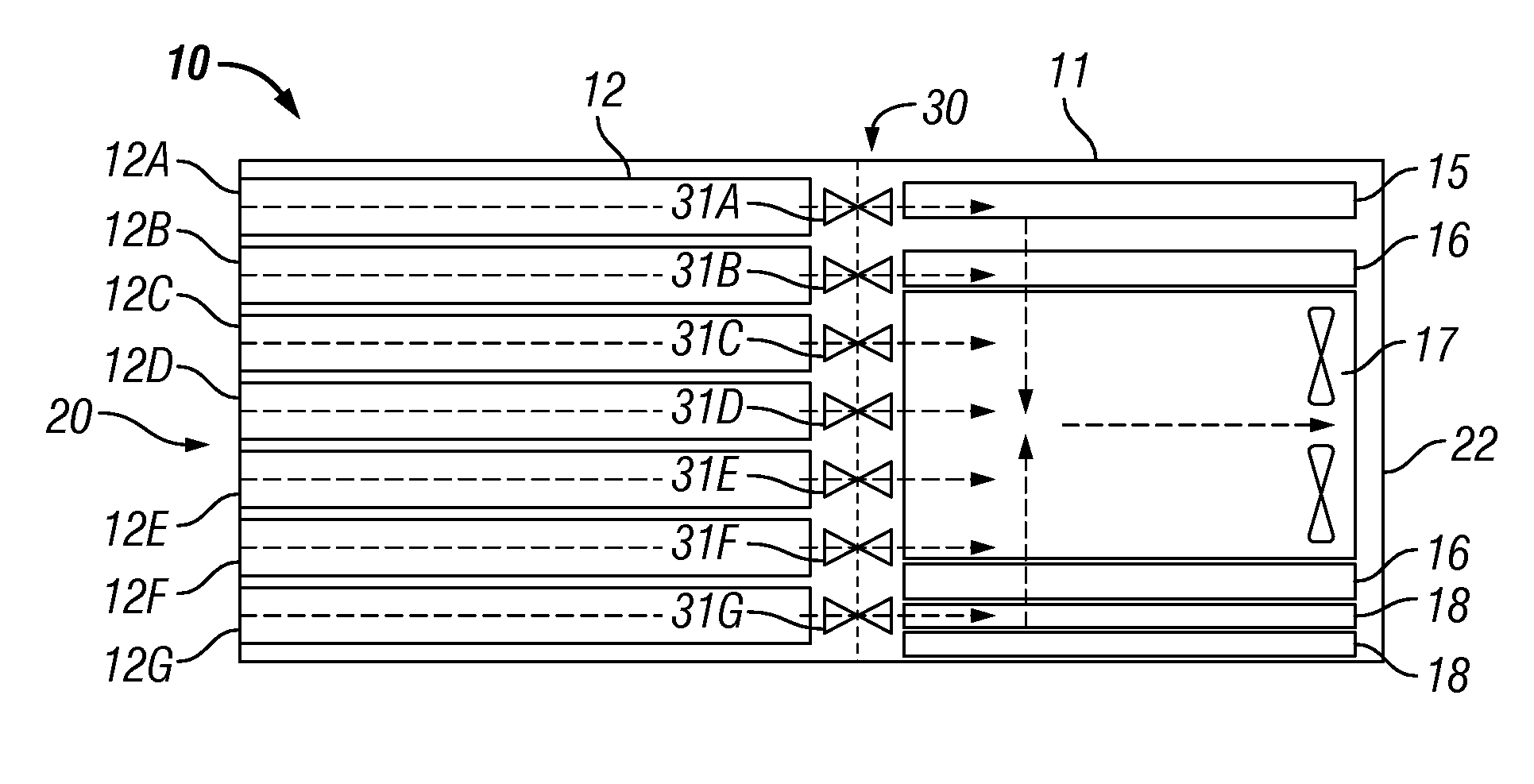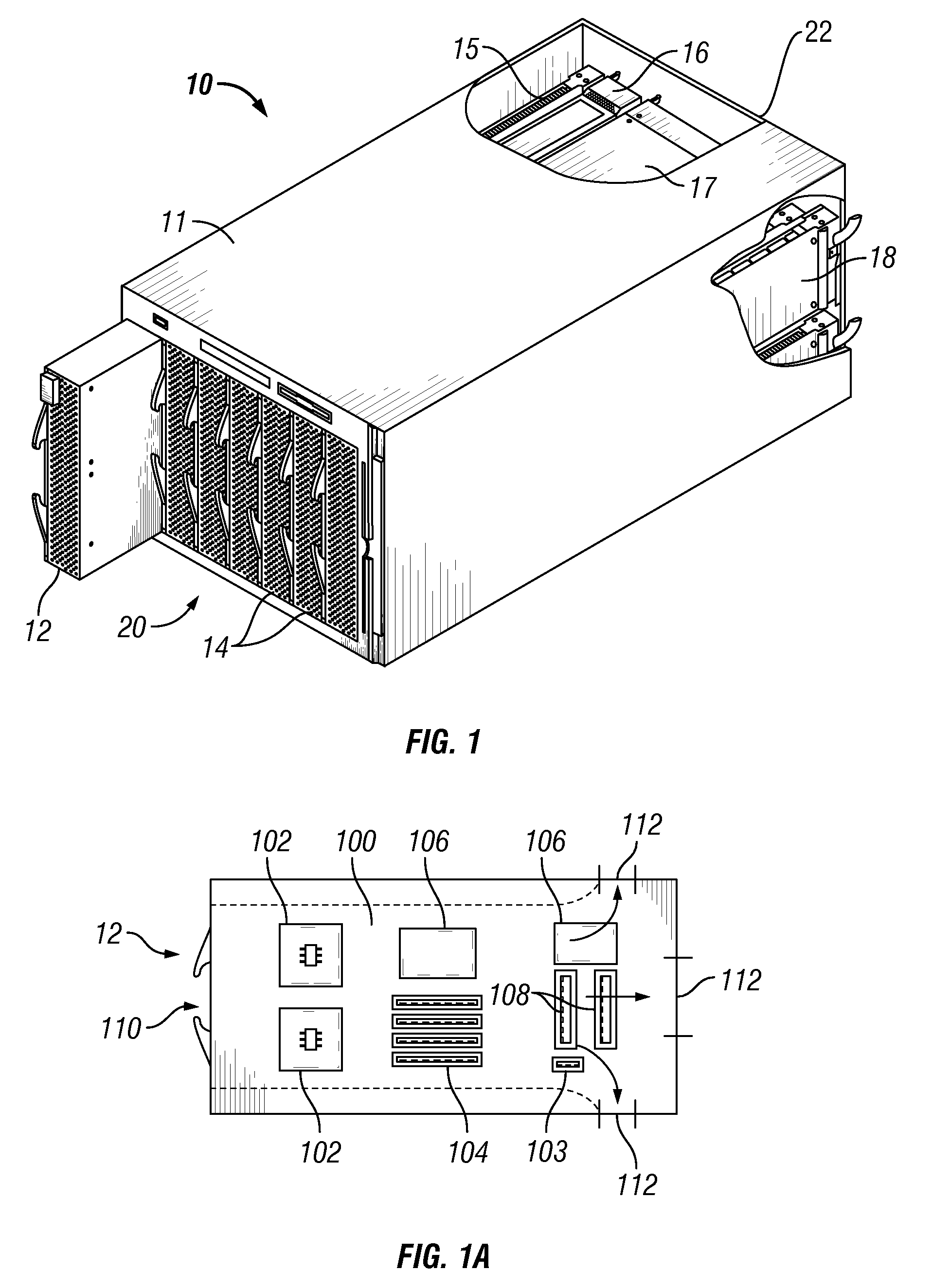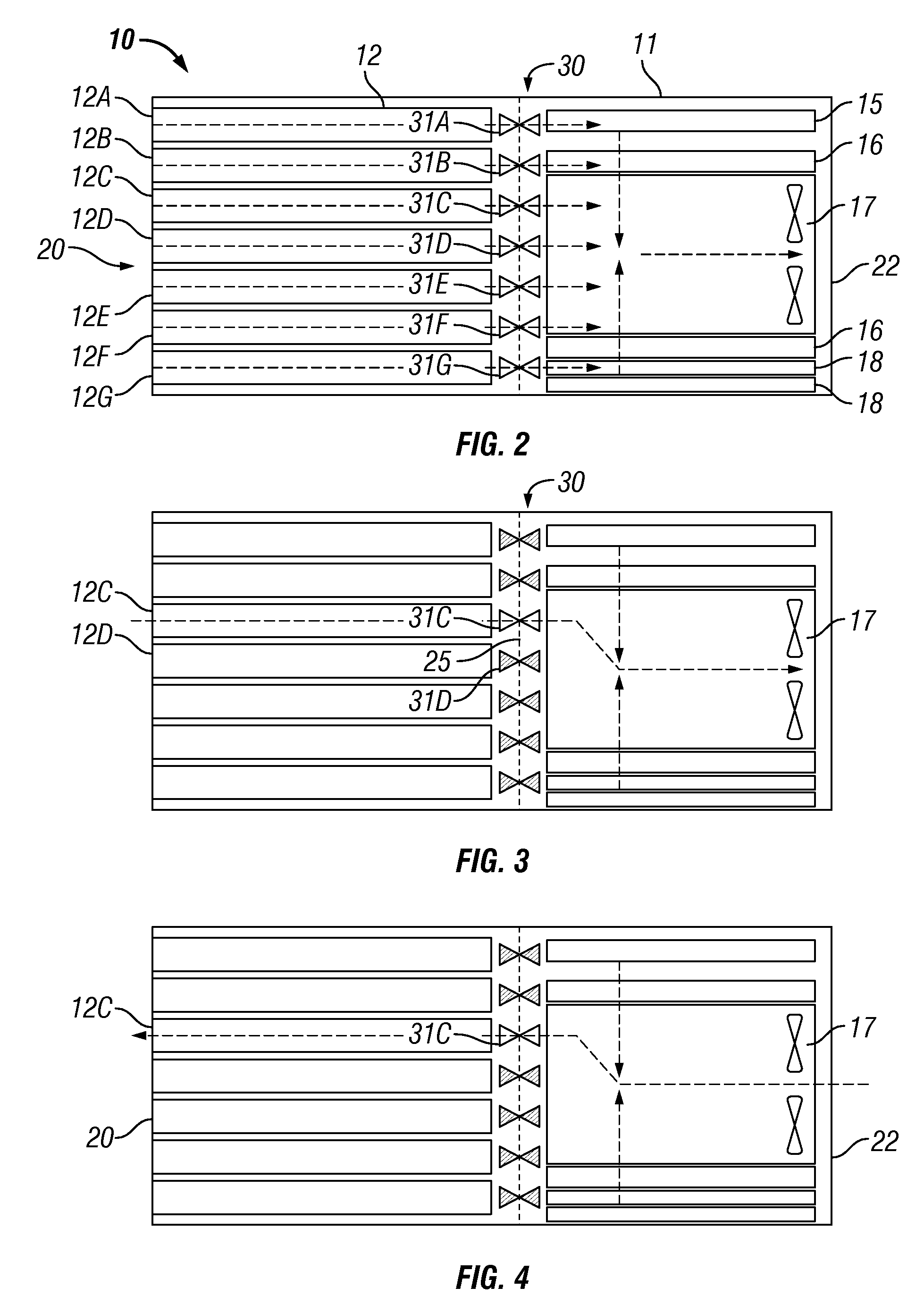Airflow control and dust removal for electronic systems
a technology of electronic systems and airflow control, applied in the direction of cooling/ventilation/heating modification, instruments, computing, etc., can solve the problems of reducing the thermal efficiency of the heatsink, reducing the performance of the system components, and increasing the amount and rate of dust deposited, so as to reduce the airflow to the other processor blades, reduce the airflow, and increase the airflow through the selected processor blades
- Summary
- Abstract
- Description
- Claims
- Application Information
AI Technical Summary
Problems solved by technology
Method used
Image
Examples
Embodiment Construction
[0027]The present invention provides systems and methods for controlling airflow in electronic systems to selectively remove dust from hardware devices such as servers. An electronic system is normally operated with air flow being directed through a plurality of hardware devices in parallel, i.e., air flows through the devices substantially simultaneously rather than consecutively. This parallel air flow removes heat generated by the hardware devices to cool the hardware devices. The present invention provides both a “cooling mode,” wherein the airflow is directed through a plurality of hardware devices in parallel, and a “cleaning mode,” in which airflow is closed or at least reduced to one or more of the hardware devices in order to increase the airflow rate through one or more other hardware devices. This increased airflow provided during the cleaning mode removes dust from the hardware devices through which it flows.
[0028]The airflow rate through a hardware device selected to be...
PUM
 Login to View More
Login to View More Abstract
Description
Claims
Application Information
 Login to View More
Login to View More - R&D
- Intellectual Property
- Life Sciences
- Materials
- Tech Scout
- Unparalleled Data Quality
- Higher Quality Content
- 60% Fewer Hallucinations
Browse by: Latest US Patents, China's latest patents, Technical Efficacy Thesaurus, Application Domain, Technology Topic, Popular Technical Reports.
© 2025 PatSnap. All rights reserved.Legal|Privacy policy|Modern Slavery Act Transparency Statement|Sitemap|About US| Contact US: help@patsnap.com



